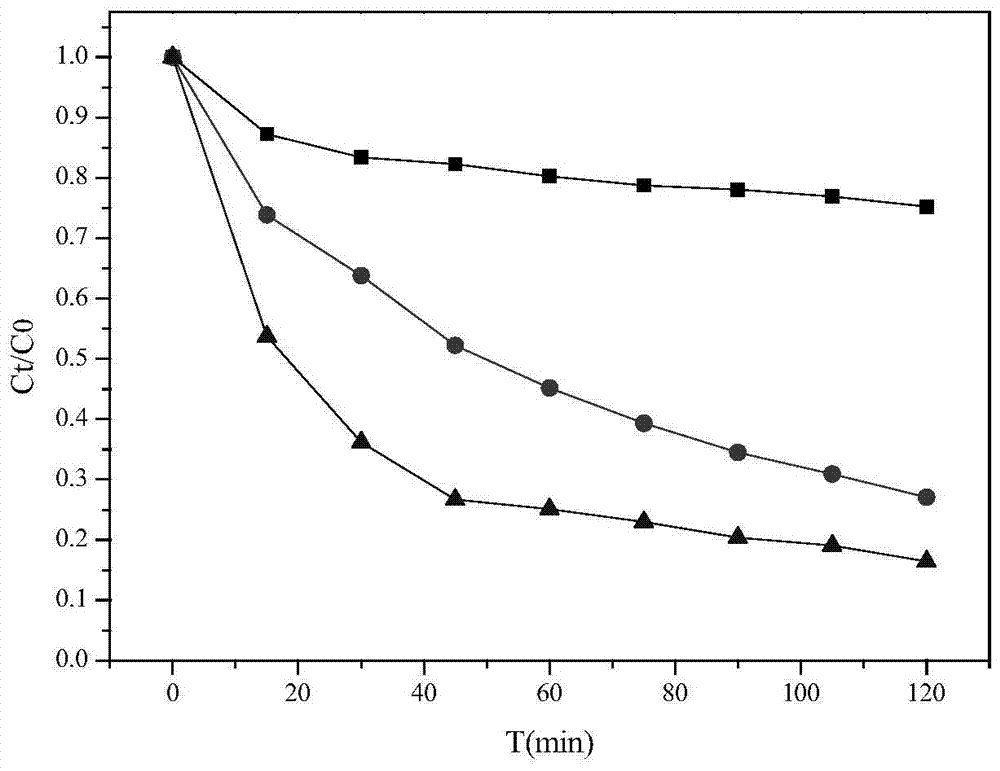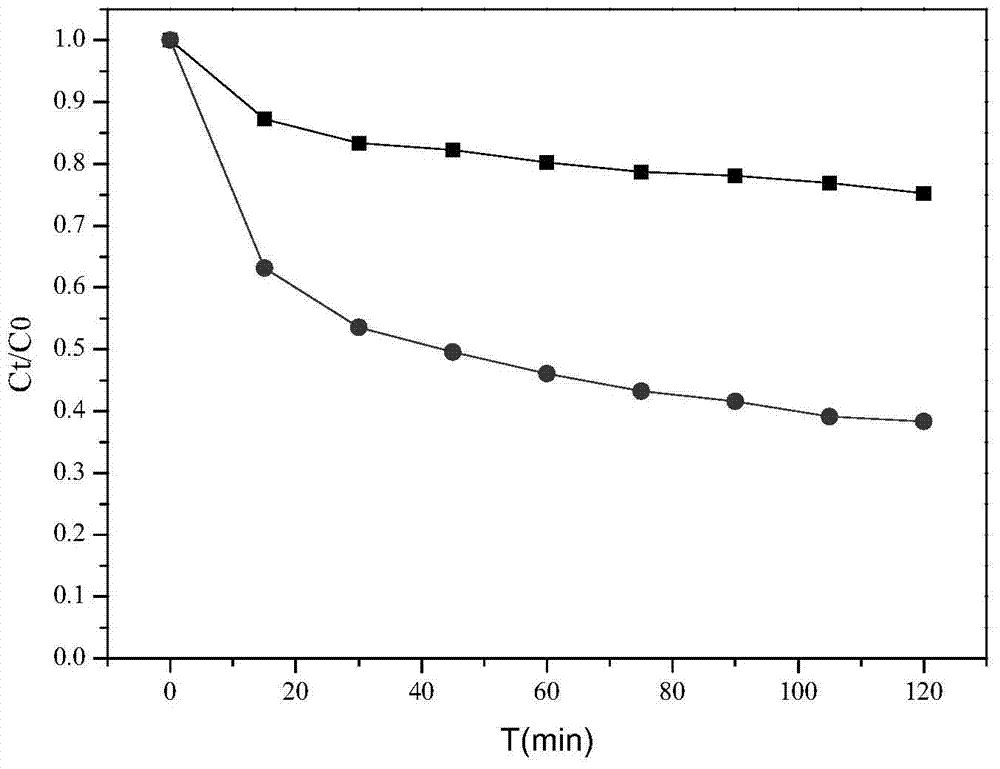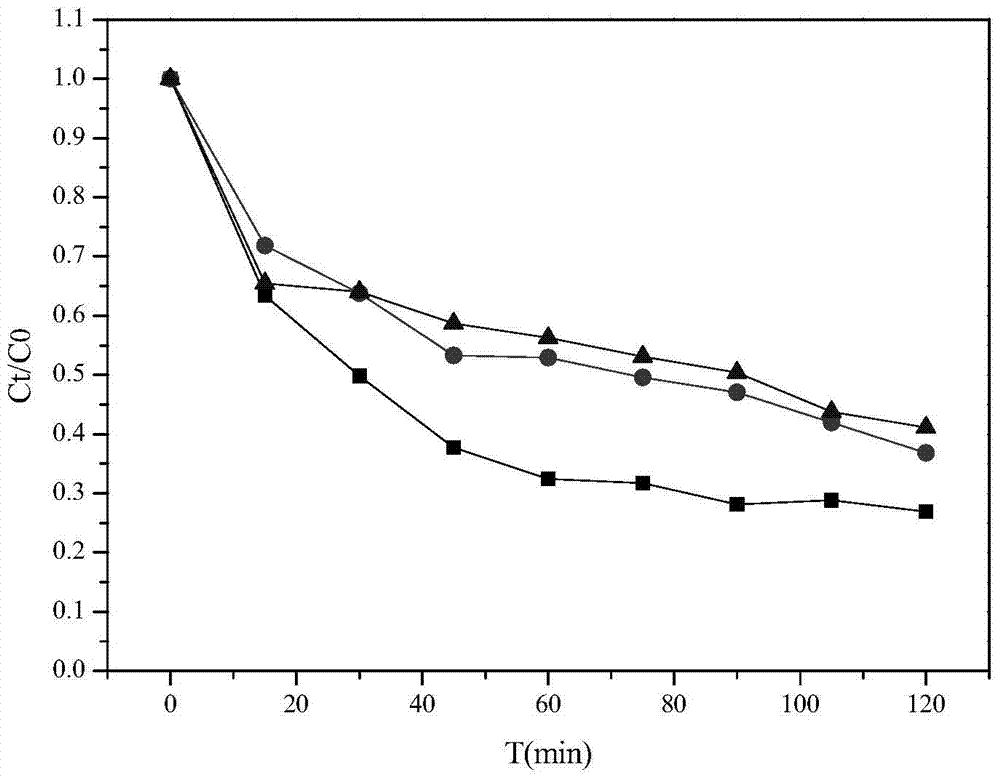A kind of pani/bivo 4 Coupling system of composite photocatalyst and microbial fuel cell
A fuel cell and coupling system technology, used in biochemical fuel cells, biological water/sewage treatment, water/sludge/sewage treatment, etc., can solve the problems of high catalyst cost and instability, low pollutant removal rate, etc. Efficiency and stability, improving productivity and the effect of
- Summary
- Abstract
- Description
- Claims
- Application Information
AI Technical Summary
Problems solved by technology
Method used
Image
Examples
Embodiment 1
[0021] BiVO 4 Catalyst production: 1.225g BiNO 3 ·5H 2 O and 0.25 g NH 4 VO 3 (molar ratio 1:1) were dissolved in 4mol L -1 HNO 3 and NaOH solution, and then add 0.1 g of surfactant CTAB to it respectively, stir for 0.5 h each, then mix the above two solutions, adjust the pH value to 5, and stir for 0.5 h to prepare the precursor solution. Pour the precursor solution into the reaction kettle, hydrothermally synthesize at 120°C for two hours, cool down to room temperature, wash the product three times with deionized water and absolute ethanol, and then dry at 100°C. The obtained powder is carefully ground with a mortar and evenly prepared for later use;
[0022] PANI / BiVO 4 Composite photocatalyst production: 1.225g BiNO 3 ·5H 2 O and 0.25 g NH 4 VO 3 (molar ratio 1:1) were dissolved in 4mol L -1 HNO 3and NaOH solution, then respectively add surfactant CTAB therein, stir each for 0.5h, then mix the above two solutions, adjust the pH value to 5, add 0.008g, 0.04g, 0...
Embodiment 2
[0026] MFC coupling device: The reaction adopts a double-chamber microbial fuel cell reactor, and the anode chamber is an anaerobic area, in which Shewanella is inoculated. Rhodamine B solution is placed in the cathode chamber, and an aeration device is provided at the bottom. The anode chamber and the cathode chamber are separated by a proton exchange membrane to exchange protons.
[0027] MFC degradation reaction: place 60g of carbon particles loaded with microorganisms in the anode chamber, and add 150ml of nutrient solution. Add 200ml of 10mg / L rhodamine B solution in the cathode compartment. The carbon rod is the anode, the stainless steel net carrying the catalyst is the cathode, and the 500Ω resistor is connected with a wire to communicate with the circuit. Place a 50W halogen lamp outside the cathode chamber, facing the photocatalyst. At the beginning of the reaction, samples were taken every 15 minutes to measure the absorbance, and the reaction was carried out for...
PUM
 Login to View More
Login to View More Abstract
Description
Claims
Application Information
 Login to View More
Login to View More - R&D
- Intellectual Property
- Life Sciences
- Materials
- Tech Scout
- Unparalleled Data Quality
- Higher Quality Content
- 60% Fewer Hallucinations
Browse by: Latest US Patents, China's latest patents, Technical Efficacy Thesaurus, Application Domain, Technology Topic, Popular Technical Reports.
© 2025 PatSnap. All rights reserved.Legal|Privacy policy|Modern Slavery Act Transparency Statement|Sitemap|About US| Contact US: help@patsnap.com



